
© Souheil Michael Khoury. (Click image for larger version)
Eifman Ballet
Rodin
St. Petersburg, Alexandrinsky Theatre
3 February 2014
www.eifmanballet.ru
Boris Eifman can never be accused of shying away from the obvious, which he attacks rather like a lion going for the jugular. His representation of the life and times of Auguste Rodin creates spectacular and absorbing dance theatre, mixing images from the human and artistic dimensions of Rodin’s life and loves (focusing on both his student, lover and muse – Camille Claudel – and long-suffering companion, Rose Beuret) with a liberal flavour of fin de siècle Paris, which includes a mash-up of that era’s greatest hits – from Massenet’s Thais, through Satie’s Gnossiennes and Gymnopédies to a rousing can-can. Extracts of Ravel, Saint-Saëns and Debussy (who was alleged to have been romantically involved with Claudel some time after Rodin) punctuate a recorded soundtrack that ran like the playlist from a Classic FM programme on the A-Z of French Romantic composers.
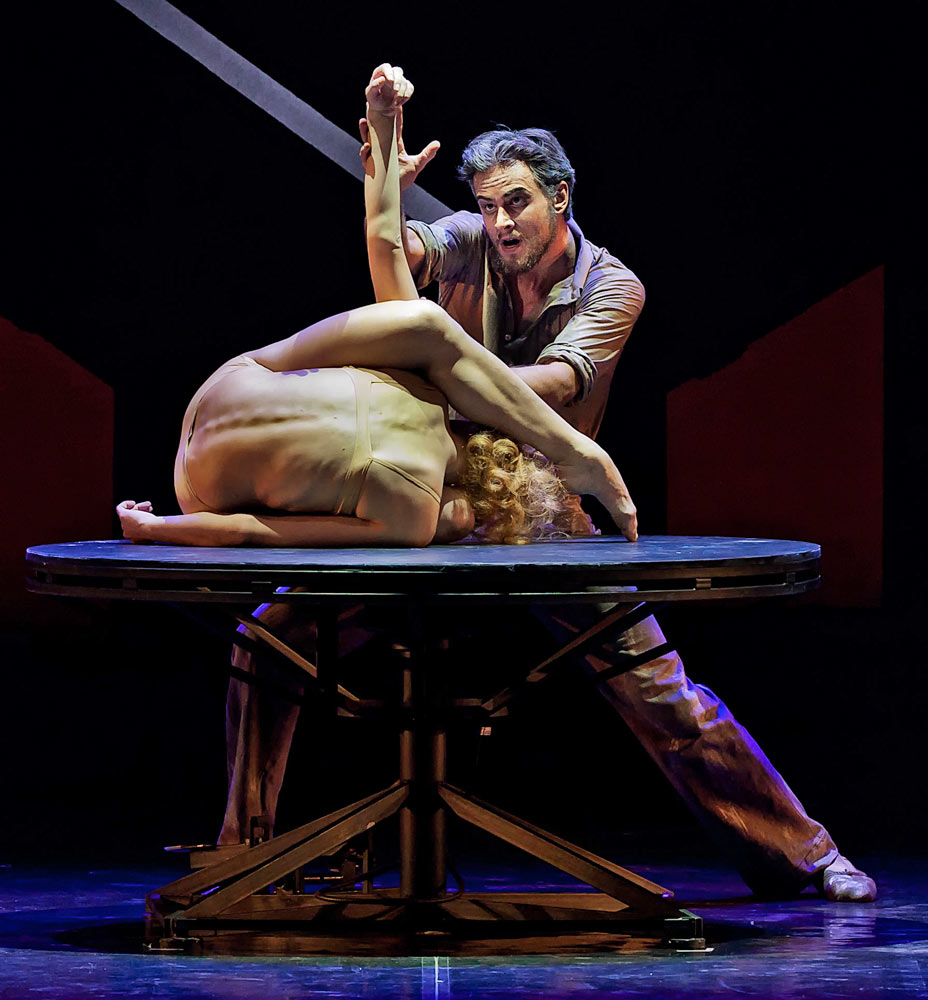
© Souheil Michael Khoury. (Click image for larger version)
Eifman is also unafraid to present his work as free-flowing emotional melodrama (he defines it as “psychological” ballet) outlining these turbulent lives and monumental works of art in a tsunami of steps and images. Here in the UK, we speak of the character of Crown Prince Rudolf in Kenneth MacMillan’s Mayerling as providing the toughest of roles for the male dancer, largely justified by the six strenuous pas de deux required of this lead dancer: but, in Rodin, I lost count of how many duets (all replete with big lifts and long holds) that the title character is required to perform. It’s certainly several more than six. After such workouts, it seems unlikely that Rodin would have had the strength left to pick up a hammer and chisel, let alone the steadiness of hand, to carve a detail. In this title role, Oleg Gabyshev was the epitome of anguished, passionate strength, giving depth to both the sculptor’s artistic ambition and his personal disorder. It was this role that won for Gabyshev the prestigious Golden Mask for Best Actor in Ballet or Contemporary Dance in 2013.
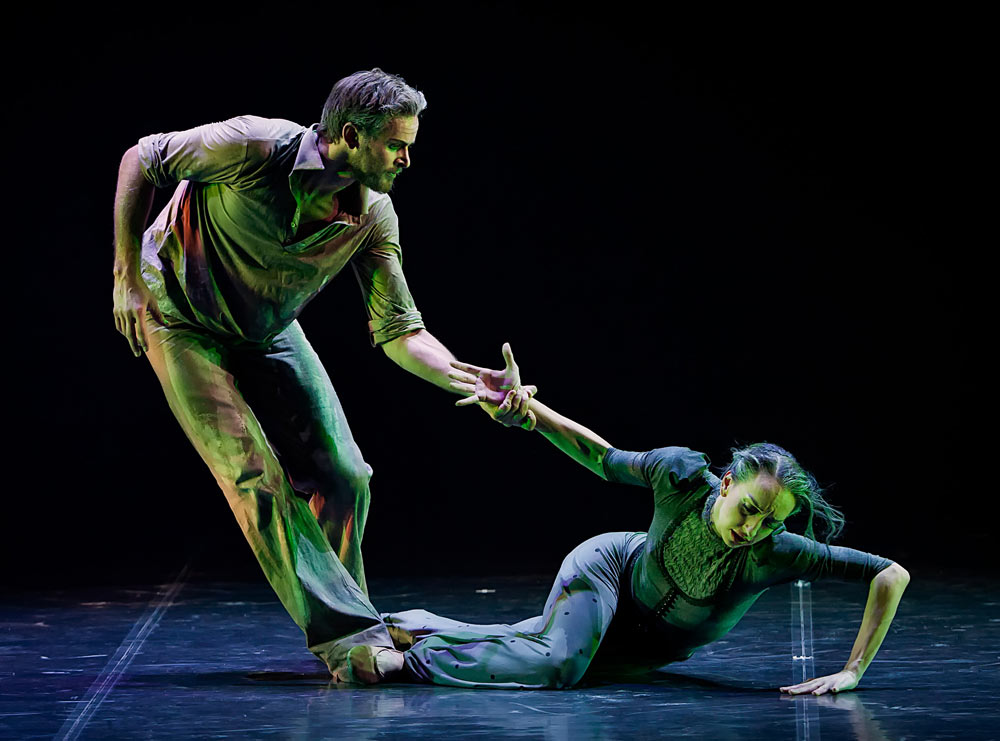
© Souheil Michael Khoury. (Click image for larger version)
Eifman’s representation of Rodin fixates equally upon the role of Claudel with an opening scene that fast forwards to her incarceration in the asylum near Avignon where she resided for her last 30 years. He opens with the fanciful notion of Rodin searching for her amongst the throng of inmates (in fact, Rodin died in 1917, aged 77, three years after Claudel’s committal, having not seen her since 1898) but this is all part of the psychological expressionism in Eifman’s game plan, which deliberately eschews any faithful biographical account of these important lives.

© Souheil Michael Khoury. (Click image for larger version)
This opening scene also lays down the indelible principle of an ongoing visual spectacle that is inherent within Eifman’s work. The stage and costume designs, respectively by Zinovy Margolin and Olga Shaishmelashvili, are high quality, striking and relevant. Rodin’s studio is dominated by a large, tilted turntable, or sculptor’s wheel, on which dancers in skimpy – often clay-coloured costumes – are moulded into beautiful shapes. The backdrop consists of black lines, of varying sizes, slashed diagonally as silhouettes to suggest either an unending set of stairways in the psychiatric hospital, or the ladders and scaffolding of an artist’s studio where monumental sculptures are created. Some of the spectacle associated with Rodin’s work is remarkably effective, notably in the tableaux representation of The Gates of Hell.
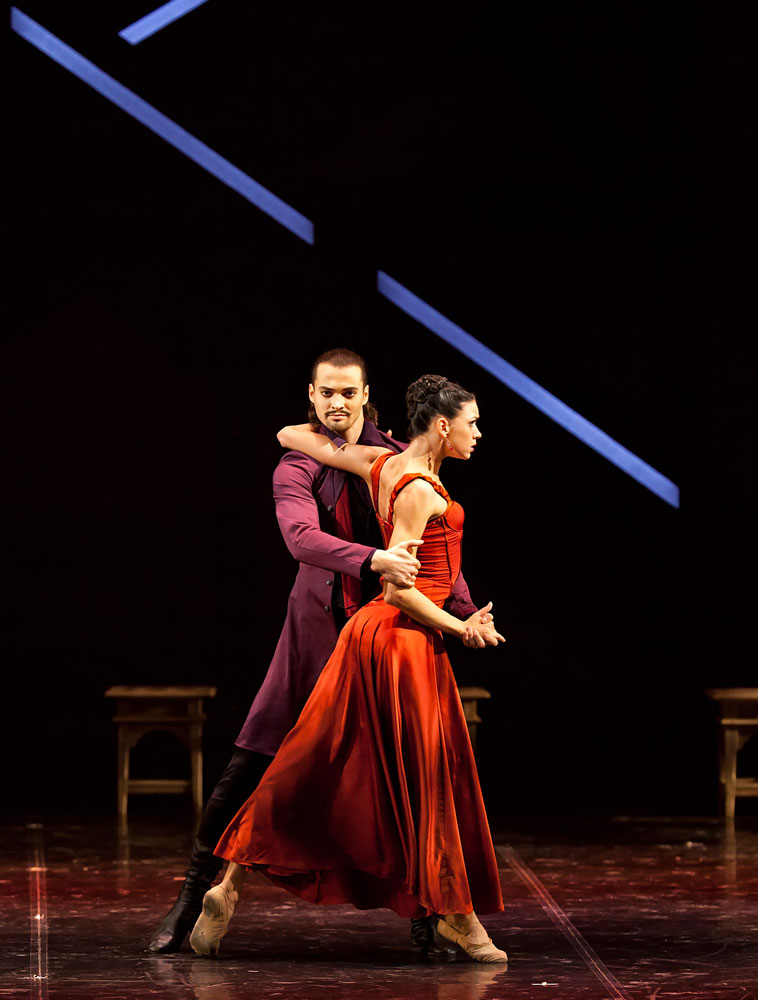
© Souheil Michael Khoury. (Click image for larger version)
Although the imagery remains memorable, it is the effectiveness of Eifman’s choreography that has the greatest resonance. Even the can-can, which could have tripped over into cliché, was handled with an inimitable style and this nightclub sequence brought with it an important change of style. It also included a moody tango, excellently danced by Dmitry Fisher with Lyubov Andreyeva (who is heart-breaking as the anguished Claudel). Eifman has employed a generous palette of movement language to delineate the three principal characters and their complex relationships, giving a spiky, energetic determination to Claudel and a classical, contemplative formality to Rose (Nina Zmievets). There was never a dull moment in any of the many pas de deux, my favourite of which was the main duet between Rodin and Claudel in Rodin’s studio, a heady sequence of passionate clinches and body-moulding manipulation.
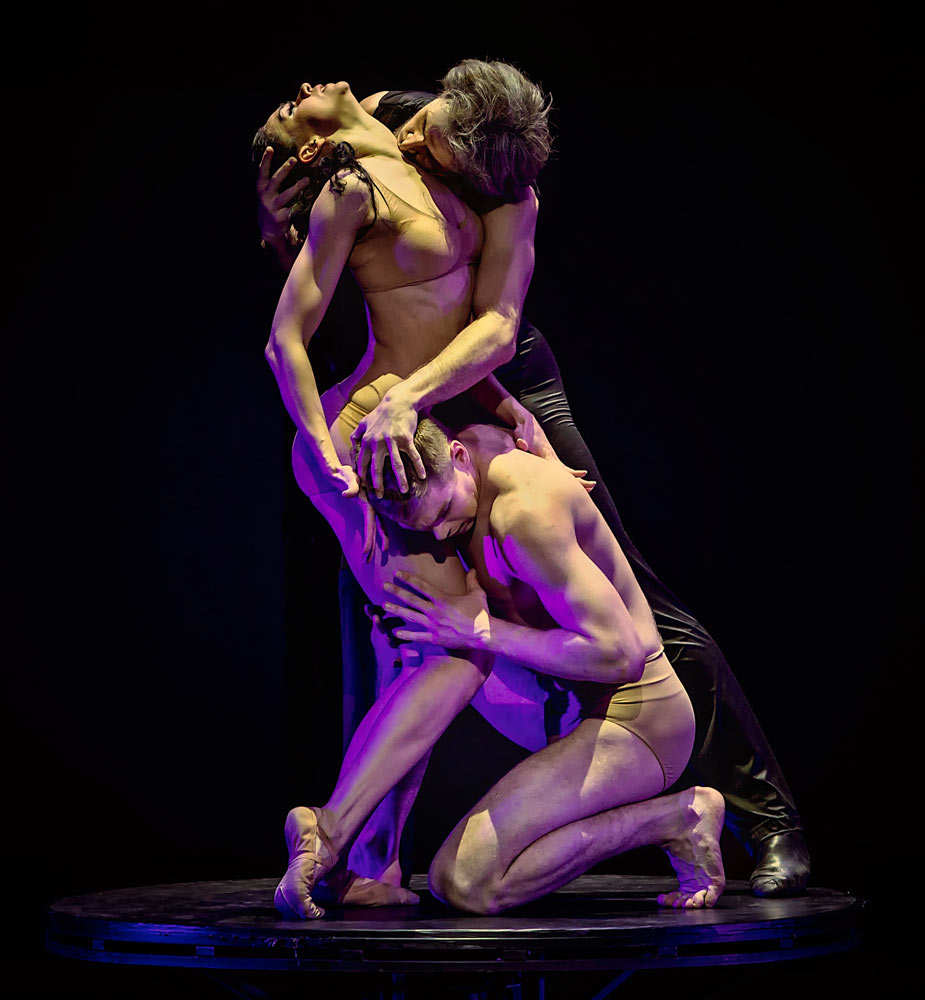
© Souheil Michael Khoury. (Click image for larger version)
Rodin is a perfect vehicle for Eifman’s skill at whipping up a dramatic storm through his unique brand of dance theatre and an unerring eye for detail and characterisation (his band of snooty art critics were hilarious) It fizzes along in a mêlée of familiar tunes, with never a dull moment, performed by an ensemble of extraordinarily gifted and athletic dancers. Their synchronicity in the group dances appears faultless with no diminution of a voraciously ebullient energy throughout the two acts. I can thoroughly recommend Rodin, which comes to London in April: if you enjoy the work of Kenneth MacMillan, then I think you will love it.









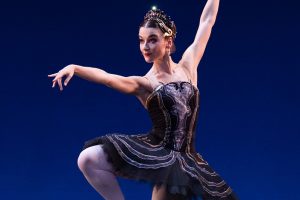

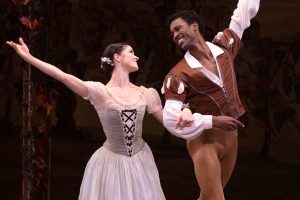

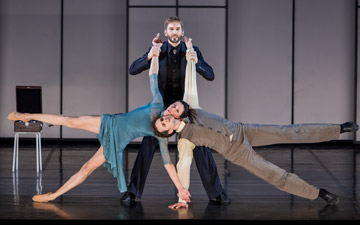
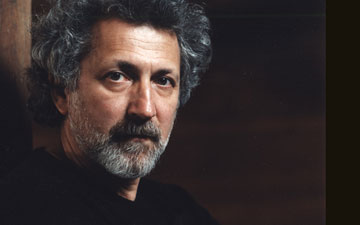
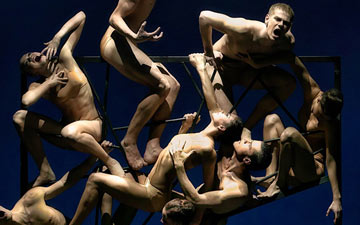
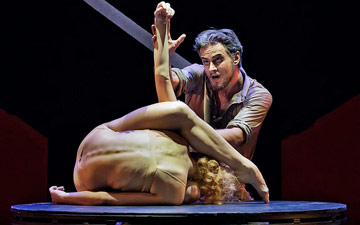
You must be logged in to post a comment.